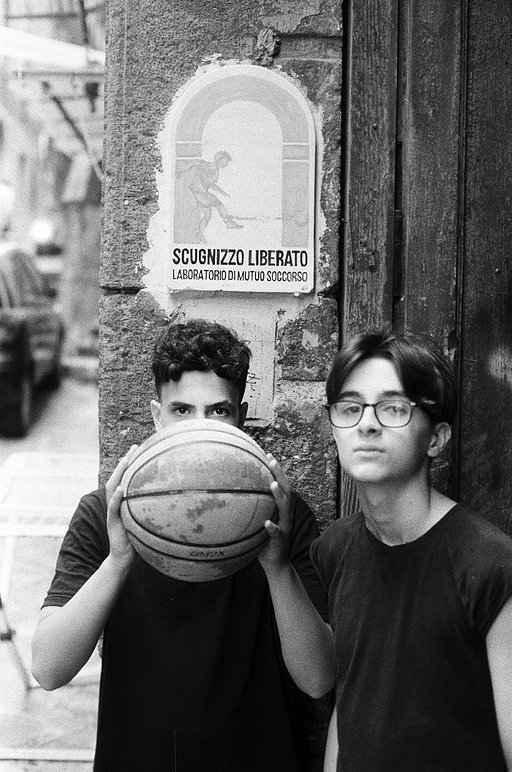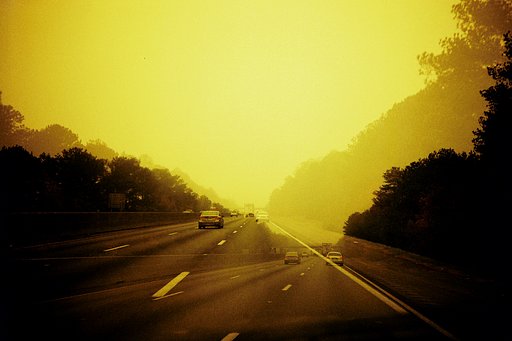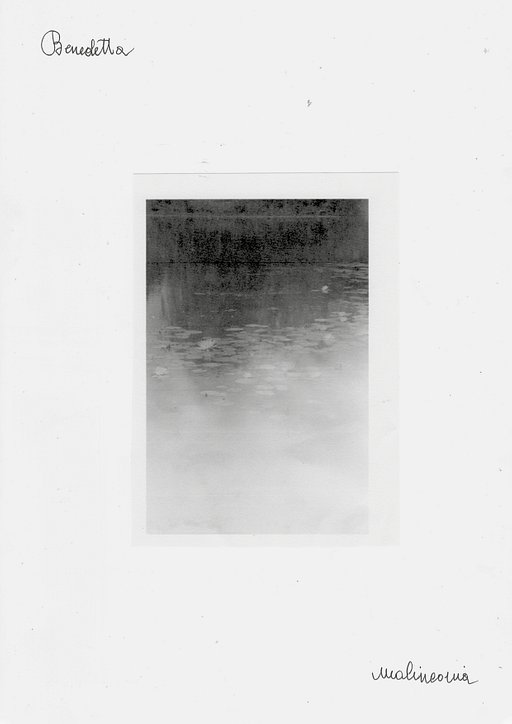A Shot for Hope: a project by Charley Fazio
13 Share TweetA Shot for Hope is a touching photographic project by the Italian photographer Charley Fazio shot in Kilis, a Turkish city on the Syrian border. Here he aimed to shoot the beauty of the human soul that can be found even in the most terrible conditions. He decided to involve local kids asking them to portray their idea of beauty with the Lomo'Instant Wide. The touching result of the project is now being exhibited in several Italian cities.
We contacted Charley to tell us how this project was created and developed.
Hello Charley and welcome to Lomography. Could you please tell us how your passion for photography started and how you got close to this specific kind of photography?
Probably I received an imprinting from my father who liked to take pictures of me, my brothers and landscapes. It is very likely that subconsciously his hobby, photography, caught my heart without me noticing it.
However, I worked as a geologist for ten years, later many things in my life took a turn persuading me to leave my work and choose photography - not because I had a clearer idea of how my life would have looked like, I just let my life lead me towards photography.
What inspired you to start making reportage on migrations and war consequences?
In a certain moment of my photographer life, after shooting several things, from landscapes to weddings, I started to feel the urge to get closer to the human being, facing the problems we have to cope with according to the context in which we are living. It is a mixture of what I've always done but in difficult and complicated situations, in which my work may be helpful somehow.
Basically I started to feel the need of putting photography at the service of something, like a humanitarian cause, trying to help people who need it the most: women and kids.
What is the motivation that pushed you to realise this project? Where did the idea of letting the kids take instant pictures come from?
A Shot for Hope was born from my personal experience. What I am doing, what I will and want to do is to make projects that can put my photography at the service of people who are not very well aware of what is happening in the world. The idea of giving the instant camera to the kids came spontaneously. I wondered: "How can I let the kids understand my job if they do not have a clue about what photography is?"
Most of the time kids were born there, on the border between Turkey and Syria, they don't have anything and the kids that have arrived there lost everything they had when escaping from the war. It is very likely that they don't remember what photography is or that they do not even know what photography is. Instant photography is the only one which includes both sides of photography at the same time: shooting and printing. Asking them to portray their personal vision of beauty was the purpose of this project: understand what could be associated with beauty in such terrible living conditions. Those kids live in a very degraded urban context, without any single form of beauty and this is why I wanted to understand what they see, what they recognise as beauty.
What was the reaction of the kids when seeing the printing and the development of the pictures?
They were astonished. Since the picture at the beginning is just a white sheet, firstly they were surprised of seeing the piece of paper coming out of the camera, like it was a magical box. But the real surprise came when the photography started to materialise in their hands. Some were speechless, others said something in Arabic that was very eloquent, even though I was not able to understand a single word. One called other kids to show them what was going on and suddenly everybody wanted to take pictures. Obviously, I could not ask everybody to portray their vision of beauty so I let them shoot whatever they wanted, which usually ends in portraits of friends or selfies. Thus, most of the time it was a picture of a person, the person was the centre of attention.
In the book which features the project you said: "Where are we? I am ashamed of myself and my life, this is a ground zero in which it's almost impossible to start anew, a point that never turns into something positive". In view of this mood, how can you wake up every day without being overcome by guilty conscience?
Feeling guilty is something constant. However, it alleviates because I always count on coming back there. I have never abandoned those kids, hence the guilty feeling is more generic. I am feeling guilty because of what humankind is not doing for those people, this is why it's more generic. Personally I am trying to do something: I founded together with my friend a foundation called "Joy for Children" and the proceeds from the book of the project, the sales of the pictures shot by the kids and an ambient fragrance created for this cause will go to those people, supporting some initiatives we have in mind like an educational centre for the kids.
Following on this topic, I think about the photographer Sebastiao Salgado who said that he struggled to come back to his everyday life after his experience in Rwanda. How do you feel when you come back home, in a privileged world compared to one of those kids, is it hard to restart?
You feel stupid because you realise how strongly related you are to material things. You think of all those tantrums that sometimes we make for silly things when there are people there that can't afford anything. That is a word without any privilege. When I come back home the first days are the toughest, since I am always thinking of those kids. They are a part of my heart since I've been there more than four times; now going there is like visiting some relatives. Coming home is always hard since I know I left them in bad conditions.
The spreading speed of images and news about tragedies have led to a constant mediatic exposition of these bad events in first world countries' everyday life. Do you think that this made us used to those contents loosening our sensitivity?
Surely we got used to tragedies, in the sense that today it's a continuous succession of sensationalistic news that sometimes even hide the important news, we are impressed for one day and then we forget them. This is why I think that once you decide to be committed to a cause, like me with those kids, you have to be perseverant and not stop at the single initiative. The foundation "Joy For Children" is a way to not stop at the single effort of the exhibition, but to be committed forever to those young boys and also to all the other kids that suffer around the world.
Do you think that being used to tragedies has prevented us from enjoying the beauty?
No, I don't think that habit of being terrifying from tragedies has reduced our sensitivity to beauty. Actually, I think is exactly the opposite, since this habit should make us even more sensitive towards beauty. It is like when the sun shines in the sky after months of bad weather: it's a relief because you are used to bad weather. At the same time, since we are now used to the ugliness of tragedies we notice more every single grain of beauty. This is exactly what I tried to do with those kids. Even though they are not living in a war zone anymore, they carry the horror of the war within themselves. Moreover, parents are tired and disenchanted, unable to transmit any sort happiness to their children. However, kids are somehow purer and despite their life, they are able to keep a glimmer of beauty, and this is what we have to catch and carry out.
In the light of what we've just said, how important is it nowadays to bring back a sense of humanity, community and compassion through projects like yours, which try to establish an emotional connection instead of shocking people with terrifying images such as a bombing showed in TV?
I really like this question, since I can base my answer on what happened the first day of the exhibition.
Catastrophic realities in the world always have been portrayed by photographers. There are a lot of works, also conducted by great photography masters, that have shown to the world poorly known dramatic situations, underlying the roughest aspects of each tragedy. However, taking aside the technical and aesthetical value of those pictures, I've never loved this kind of awareness-raising projects. A picture of a desert is more impressive if there's a green sprout in a corner. In this way, sensitivity is more stimulated because you are not just showing the environmental disaster, but also the possibility to resist, the strength of nature against the danger of being destroyed. This is the same strength that I try to put in my pictures and this is also what I want to underline in this project too.
The world is full of disasters and agony, but I can establish a stronger connection between my pictures and the public only if I am able to show them the hope and the desire of being alive, in spite of all the tragedies. I saw the true and deep feelings of the visitors of the exhibition when they saw the portraits of the kids of Kilis. Those young boys are the living proof that even in the dryest desert a flower can blossom. It's their delicate strength to be part of this world that really shakes souls because, in the end, everybody can identify its own apprehensions in that gazes and smiles veiled with a bit of sadness.
For further information on this project visit the website www.labellezzaritrovata.it and the Facebook page. For further information on the work of Charley Fazio visit his website.
written by lomosmarti on 2018-01-06 #people



























No Comments